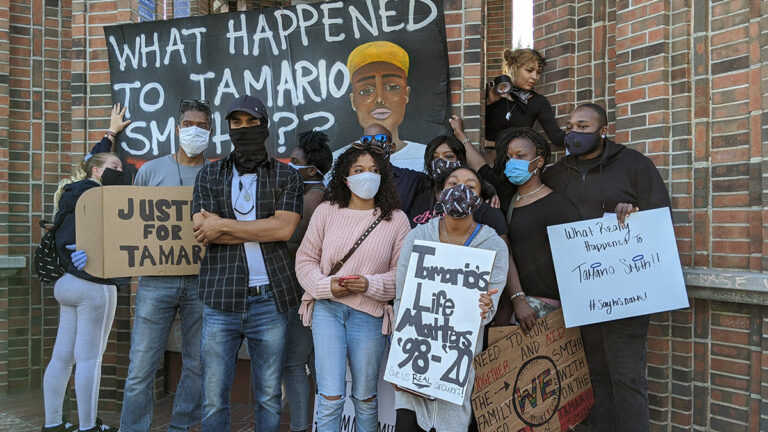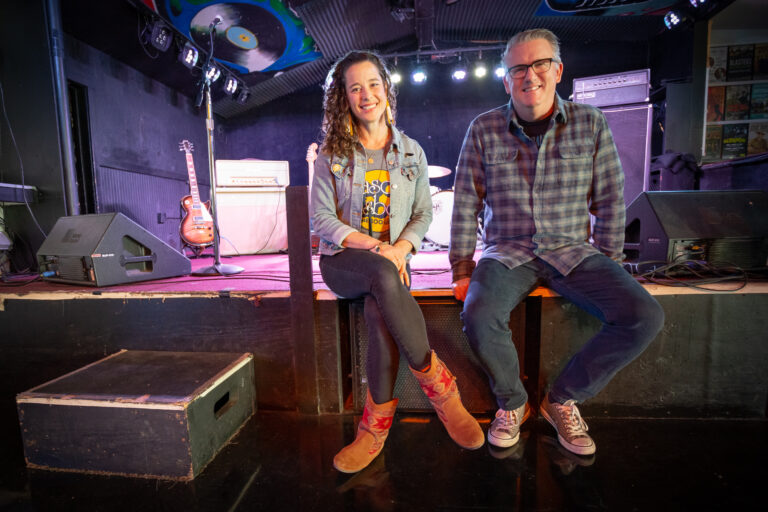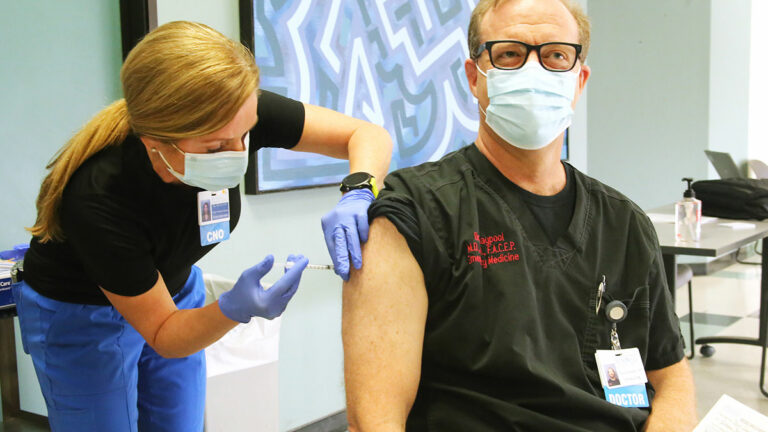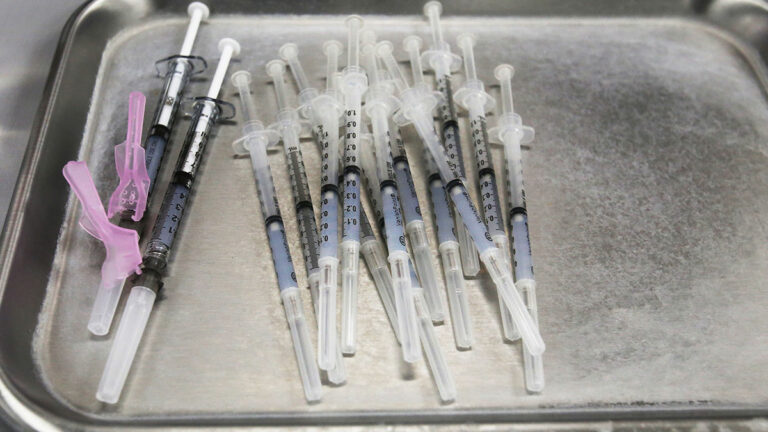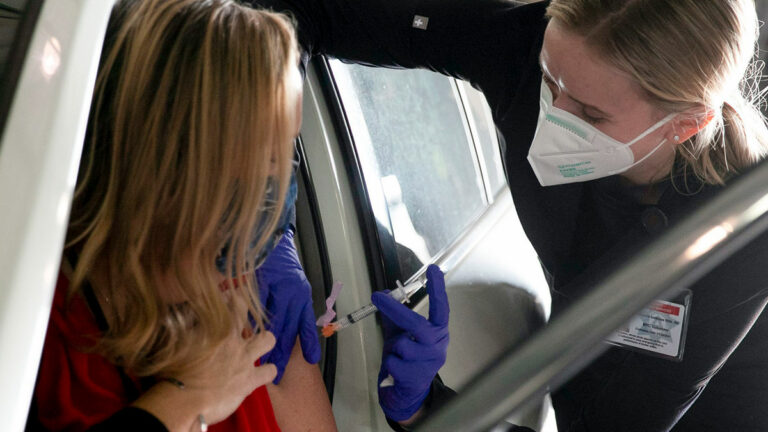By Rachana Pradhan and Fred Schulte
As they rush to vaccinate millions of Americans, health officials are struggling to collect critically important information — such as race, ethnicity and occupation — of every person they jab.
The data being collected is so scattered that there’s little insight into which health care workers, or first responders, have been among the people getting the initial vaccines, as intended — or how many doses instead have gone to people who should be much further down the list.
The gaps — which experts say reflect decades of underfunding of public health programs — could mean that well-connected people and health personnel who have no contact with patients are getting vaccines before front-line workers, who are at much higher risk for illness. Federal and state officials prioritized health workers plus residents and staffs of nursing homes for the first wave of shots.
Although officials leading President Joe Biden’s Covid response have pledged to tackle racial inequities as they seek to control the pandemic, lapses in reporting race or ethnicity could hinder efforts to identify and track whether minorities hit especially hard by the pandemic are getting shots at a high-enough rate to achieve hoped-for levels of herd immunity. So far, limited data in multiple states shows Black residents are getting vaccinated at lower rates than whites.
“Every state knows where they’ve sent vaccine, and every provider has to report inventory. But as far as who is being vaccinated, that one is a little more tricky,” said Claire Hannan, executive director of the Association of Immunization Managers.
Data that eventually makes its way to the Centers for Disease Control and Prevention and other federal systems is “only going to be as good as whatever you can get out of the vaccine registries” that vary by state, said Dr. Marcus Plescia, chief medical officer for the Association of State and Territorial Health Officials. “They’re all different and, going into this, they were all at different stages of how robust they were.”
There are 64 immunization registries in the United States that gather information for states, territories and a handful of large cities — and they aren’t connected. Meanwhile, real-time data in the U.S. public health system is virtually nonexistent, Plescia said.
Reporters at KHN examined the data being gathered versus what the CDC says is supposed to be collected for every person vaccinated, which includes: name, address, sex, date of birth, race and ethnicity, the date and location where they were vaccinated, and the shot they received (currently only two products are available, from Pfizer-BioNTech and Moderna). Not on its list: occupation, even though initial vaccine distribution largely hinges on place of work, prioritizing health care personnel, long-term care facilities and then other essential workers such as teachers, grocery store workers and firefighters.
Dr. Katherine Poehling, a pediatrician at the Wake Forest School of Medicine who’s on the CDC advisory committee that issued vaccine priority recommendations, declined to comment on whether occupation should have been a required element for reporting to the CDC.
“I think you can always wish for more data, but really what we’re going for is vaccinating everybody that wants to be vaccinated,” she said. “The fact that there was something available on day one was really remarkable,” she said, referring to a database that could track vaccine shipments and allocations by state.
Still, gaps are evident, including holes in CDC rules for reporting race and ethnicity. Race and ethnicity information are missing from at least hundreds of thousands of vaccine doses that have already been administered and reported to state public health authorities.
Texas’ vaccine data on Wednesday showed that race or ethnicity was unknown for more than 700,000 people. Virginia’s dashboard shows that data was missing for nearly 300,000 vaccinations, or 52% of vaccine doses, as of Tuesday. The same was true for tens of thousands of vaccinations in Colorado and Maryland.
In Minnesota, state law prohibits the sharing of data on race and ethnicity.
“It is important how many shots are administered, but it is critical that we get good race and ethnicity information about who is receiving it so we can identify disparities and other problems,” said Janet Hamilton, executive director of the Council of State and Territorial Epidemiologists.
The CDC declined to say how many of the vaccine records it had received were missing the information. In response to questions, CDC spokesperson Kristen Nordlund said the agency plans to publish race, ethnicity and other demographic data next week.
The Department of Health and Human Services did not respond to multiple requests for comment.
Dr. Marcella Nunez-Smith, chair of the Biden administration’s Covid-19 health equity task force, on Wednesday conceded that the racial and ethnicity data is “incomplete” but said it wasn’t the only way to gauge progress of the vaccine rollout on the ground.
“We can think about things like neighborhoods and communities as metrics and ways to track as well,” she said. “We’re building our equity dashboard right now, and we’ll rely on government sources as well as sources of data external to government.”
The ongoing struggle for complete data shows how little has changed for the CDC since the virus appeared in the U.S. one year ago and its early efforts to collect data identifying Covid-infected people were widely panned.
So far, the CDC has publicly stated how many vaccines have been distributed nationwide and how many doses administered. Its dashboard includes a breakdown of how many shots have been given by state and in long-term care facilities. Walgreens and CVS together have given more than 2.5 million doses in nursing homes and other long-term care facilities, though neither company has released data on race or whether the shots were given to patients or staffers.
State and federal health officials know where vaccines go as officials must track inventory by facility. Several states have released breakdowns of doses administered by the type of institution, providing a window into how many shots are being used in hospitals, nursing homes, pharmacies, primary care practices, public health departments and tribal health sites. And when signing up for an appointment, individuals may be asked to provide their occupation to attest they qualify for a shot under a state’s rules at a given time.
Maryland and Ohio require providers to submit data on the occupations of vaccine recipients, in a break with CDC practice. But several states contacted by KHN said they do not collect that information, such as Idaho, Michigan, Minnesota, Texas and Virginia.
Electronic health records manufacturers that provide software to hospitals and other facilities said they are scrambling to modify the software to accommodate data reporting requirements that vary by state.
Occupation is one example. Another: Texas law requires the state to collect information on all medications given “in response to a declared disaster or public health emergency,” said State Health Services spokesperson Chris Van Deusen.
Leigh Burchell, vice president of policy and government affairs at the EHR firm Allscripts, said these variations are “obstacles none of us has tackled before,” though she thinks that, overall, “successes outweigh failures” as companies have had to adjust quickly during the pandemic.
EHR systems can connect to state registries, which ultimately send vaccine tracking data to the CDC. A lack of “a coordinated, national public health infrastructure” continues to be a problem that “forces everyone to work less efficiently than would be optimal,” Burchell said.
Health IT consultant Reed Gelzer said the situation reflects the 30-year-plus failure of the public health system to modernize data collection. He said officials need look no further than chronic problems tracking childhood immunizations, handled in some states at the county level, and in others at the state level, often poorly. A national system to track immunizations has never existed, which he argues should have been discussed before the vaccine rollout.
“As far as I know, even in the earliest days of the pandemic, nobody did stress-testing of the information system,” Gelzer said.
Cerner, a major electronic health records company, says that some hospitals are using an existing workplace health system to track employees who have been vaccinated while others create a patient record for vaccinated employees as well as for patients. The systems can capture demographic details, but the data fields to do that have to be turned on and it’s unclear whether its client hospitals have done so.
The CDC and other federal agencies rely on a complicated web of systems to get data about who’s been vaccinated. State and local vaccine registries, known as immunization information systems, are the most comprehensive source of records and the “source of truth,” Hannan said.
Those registries have long-standing connections to providers’ electronic health records, said Rebecca Coyle, executive director of the American Immunization Registry Association. But they aren’t meant to capture certain information, such as a patient’s medical history and occupation.
Those state and local registries transmit data to an HHS-owned clearinghouse, where personal details are redacted.
The clearinghouse gets data from other sources, too. These include a new CDC vaccination clinic mobile app called VAMS, as well as pharmacies, prisons and federal agencies like the Department of Veterans Affairs and the Indian Health Service.
A limited slice of the data then moves to another CDC repository known as the “Data Lake,” where it can be analyzed and reported to the CDC and Tiberius, a separate software platform developed by federal contractor Palantir for former President Donald Trump’s Operation Warp Speed effort. The Data Lake also receives information on shipment and vaccine orders from the CDC’s VTrckS system.
On top of that dizzying array of tools, many states use another, third-party software system, PrepMod, to manage vaccine inventory, appointments and reporting.
When asked whether not having data on occupations could hinder tracking whether priority groups have received their shots, Nordlund of the CDC said it’s unnecessary to vaccinate all individuals in one phase before initiating the next.
“This means ideally hitting a sweet spot that maximizes getting vaccine into arms while also being mindful of the priority groups,” Nordlund said, “especially because these are people who are higher risk for complications from Covid-19 or are more likely to be exposed to the virus because of their jobs.”
Lawmakers recently attempted to address the nation’s antiquated public health data infrastructure, partly by appropriating $500 million under the CARES Act to the CDC. In an August letter to Rep. Lucy McBath (D-Ga.), former CDC director Dr. Robert Redfield said the agency would use the funds to update how state and health departments report data to federal officials, improve the CDC’s own data infrastructure, and develop new standards for public health reporting.
Additionally, tucked into the massive year-end spending bill Congress passed in late December was a requirement that HHS expand and improve public health data systems used by the CDC and award grants to state and local health departments to upgrade their infrastructure.
The Biden administration has made promises to strengthen the federal government’s approach to data collection on vaccination efforts.
KHN data reporter Hannah Recht and KHN correspondent Lauren Weber contributed to this report.
KHN (Kaiser Health News) is a nonprofit news service covering health issues. It is an editorially independent program of KFF (Kaiser Family Foundation), which is not affiliated with Kaiser Permanente.



